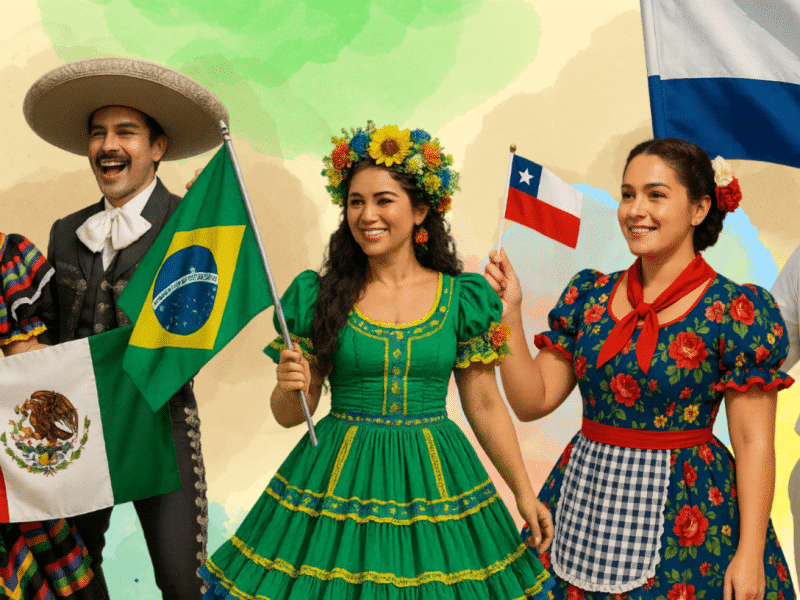Decoding Traditions: Los Reyes Magos, The Rosca and Tiny Baby Jesus
January 6 marks a joyous celebration of the Latino community’s cultural richness as families come together for Día de Los Reyes Magos. But have you ever wondered what the deal is with that tiny Baby Jesus in the famed Rosca de Reyes?

The tradition of the Reyes Magos, or “Three Wise Men,” is a religious holiday celebrated in many Spanish-speaking countries around the world. It is a celebration of the three wise men, Melchor, Gaspar, and Balthasar, who are said to have followed the Star of Bethlehem to the birthplace of Jesus and brought gifts of gold, frankincense, and myrrh.
In Spain, many Latin American countries, and amongst the Latino diaspora in the U.S., children eagerly await the arrival of the Reyes Magos on January 6th, known in many places as Epiphany or El Dia de Los Reyes. It is a time for families to come together, exchange gifts, and enjoy traditional foods such as the Rosca de Reyes, a circular cake with dried fruit, and a small figurine of a baby Jesus hidden inside.
For many immigrant families in the U.S., this is often treated as a second Christmas, which makes complete sense because when the opportunity for extra gifts arises…
Reyes Magos Explained
The celebration of the Reyes Magos dates back to the Middle Ages and has become an integral part of the cultural fabric of Spanish and Latin American countries. In many homes, children write letters to the Reyes Magos, listing their gift requests and leaving out cookies and water for the wise men’s camels.
In the days leading up to Epiphany, which according to the U.S. Library of Congress, commemorates “the manifestation of Jesus Christ to the world and the coming of the Magi,” parades and pageants are held in honor of the Reyes Magos, with people dressing up as the wise men, their camels, and other characters from the nativity story.

Image by Municipalidad de Miraflores – Flickr
The tradition of the Reyes Magos was brought to Latin America from Spain during Spanish colonization. When the Spanish conquistadors plundered and conquered indigenous lands, they brought their cultural traditions with them that they imposed on their new subjects, including the celebration of the Reyes Magos.
Over time, the tradition of the Reyes Magos has become an integral part of the cultural fabric of many Latin American countries. It is now a widely known holiday celebrated by millions of people throughout Latin America and the U.S.
The Rosca de Reyes and Baby Jesus
In Latin America, the Reyes Magos celebration is similar to how it is celebrated in Spain.
The Rosca de Reyes, or King’s Cake, is a traditional sweet bread baked in a circular shape made with sweet dough and decorated with dried fruit. It often comes with a small baby Jesus figurine hidden inside.
The tradition of the Rosca de Reyes is believed to have originated in France. It was later brought to Spain and then to Latin America, where it has become an integral part of the Reyes Magos celebration.
The small figurine that is hidden inside the Rosca is an important part of the tradition. The figurine is usually a small hard plastic doll that represents baby Jesus and is placed inside the cake before it is baked.

demi, CC BY 2.0, via Wikimedia Commons
According to tradition, the person who finds the figurine in their slice of the Rosca de Reyes is considered the King or the Queen for the day and must host the next celebration or party. This is meant to symbolize the generosity and hospitality at the heart of the Reyes Magos celebration. In some places, it is also traditional for the person who finds the figurine to make a small charitable donation or to perform a good deed as a way of honoring the spirit of the holiday season.
The small figurine that is hidden inside the Rosca also adds an element of surprise and fun to the celebration. In many Latino households, it’s become customary to dread being the person who ends up with the baby Jesus in their slice because then they are responsible for hosting a tamalada for the next family get-together on February 2, or Candelaria Day.
Candelaria Day officially marks the end of holiday celebrations that started on December 12 with the Virgen de Guadalupe feast day and extends into Nochebuena (Christmas Eve), Christmas Day, and Three Kings Day.
But everyone knows Latinos don’t need a religious holiday to get the family together for some good food, fun, and traditions that transcend generations!




